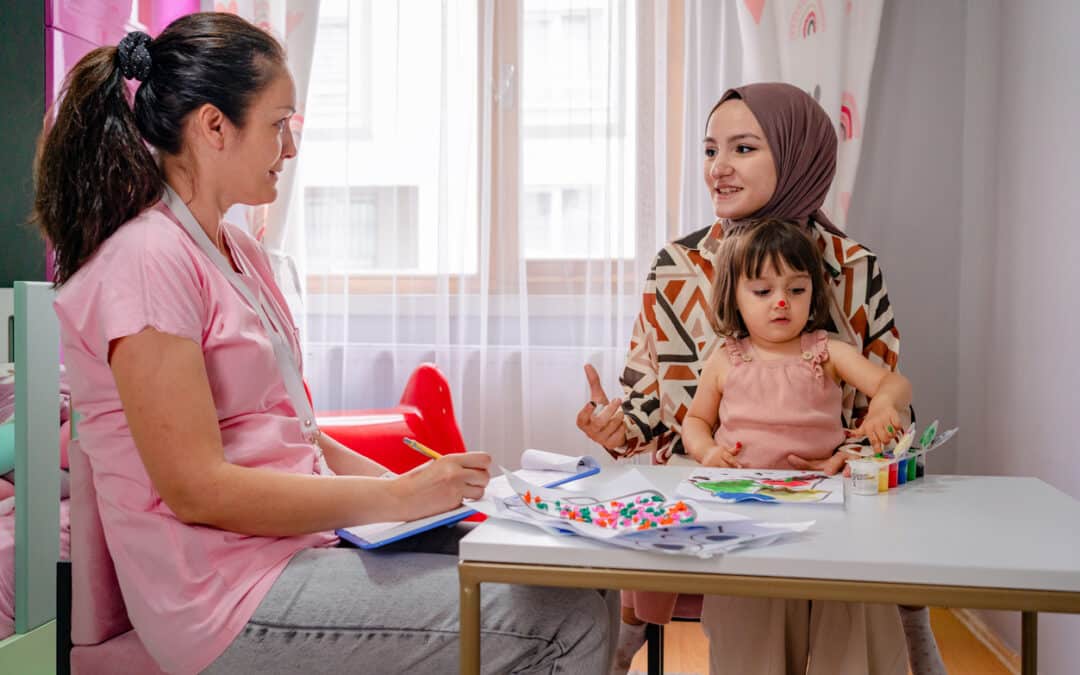Optimize the Evaluation of Multilingual Children in Speech Therapy with an Interpreter
When evaluating a multilingual child in speech therapy, you need to communicate effectively with them and understand their specific language needs. Working with an interpreter can be essential to ensure an accurate and comprehensive evaluation that is culturally and linguistically appropriate.
Before the Evaluation Meeting
- Preparation: Before the meeting, discuss the evaluation objectives, the child’s background, and the languages used by the child and their family with the interpreter. Provide information on the tasks and evaluation tools to facilitate their preparation. Ensure the materials used are culturally appropriate. For example, Northern Canadian Indigenous children may not recognize certain animals in the tests. The interpreter plays an essential role in informing you about the child’s culture and mother tongue, ensuring a respectful evaluation.
During the Evaluation Meeting
- Introduction: Briefly introduce the interpreter to the child and their family. Explain their role and highlight the importance of cultural and linguistic diversity to create an inclusive environment.
- Clear Communication: Use simple language and avoid technical terms. Take regular pauses to allow the interpreter to translate accurately. Address the child directly to build trust.
- Collaboration with the Interpreter: Work closely with the interpreter. Provide clarifications and allow them time to translate. For language samples, ask the interpreter to write down what the child says “word for word” in their mother tongue.
- Observation: Take into account the different languages used by the child and note their language skills in each. Observe interactions to gain additional information on their communication skills and cultural differences.
After the Evaluation Meeting
- Feedback to the Interpreter: Provide feedback on the quality of the translation and collaboration. Acknowledge the importance of their role in the success of the evaluation.
- Review of Results: Review the results considering the information provided by the interpreter. This gives a precise picture of the child’s skills in different languages and integrates cultural influences.
Conclusion
Working with an interpreter during the evaluation of a multilingual child in speech therapy is essential for ensuring an accurate and fair assessment. By following these steps before, during, and after the meeting, you ensure a comprehensive evaluation that meets the specific needs of the child and their family. This approach promotes personalized care, essential to help the child develop their language skills and reach their full potential.
Click here for more helpful tips on working with interpreters:
Collaborating With Interpreters, Transliterators, and Translators


